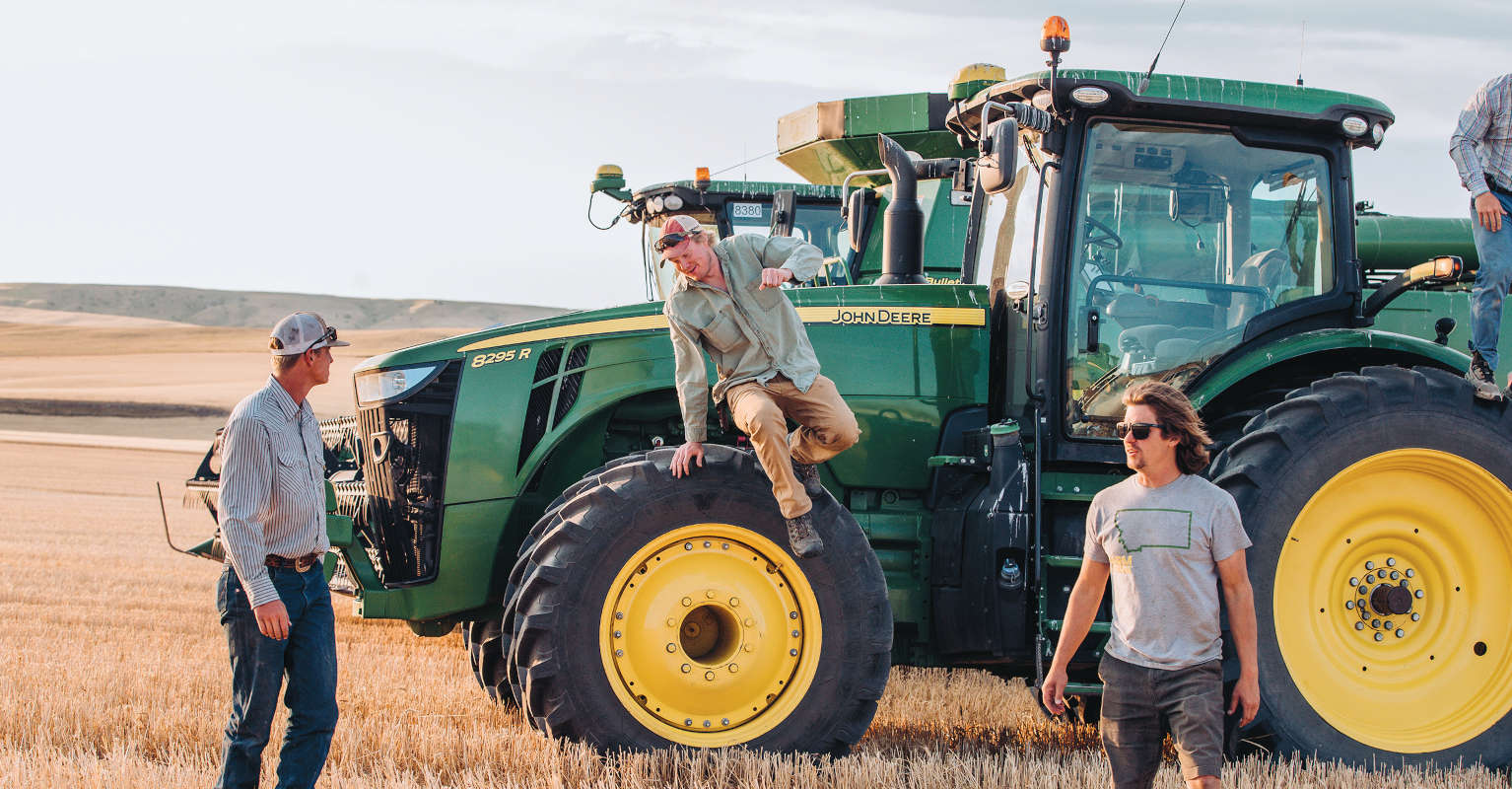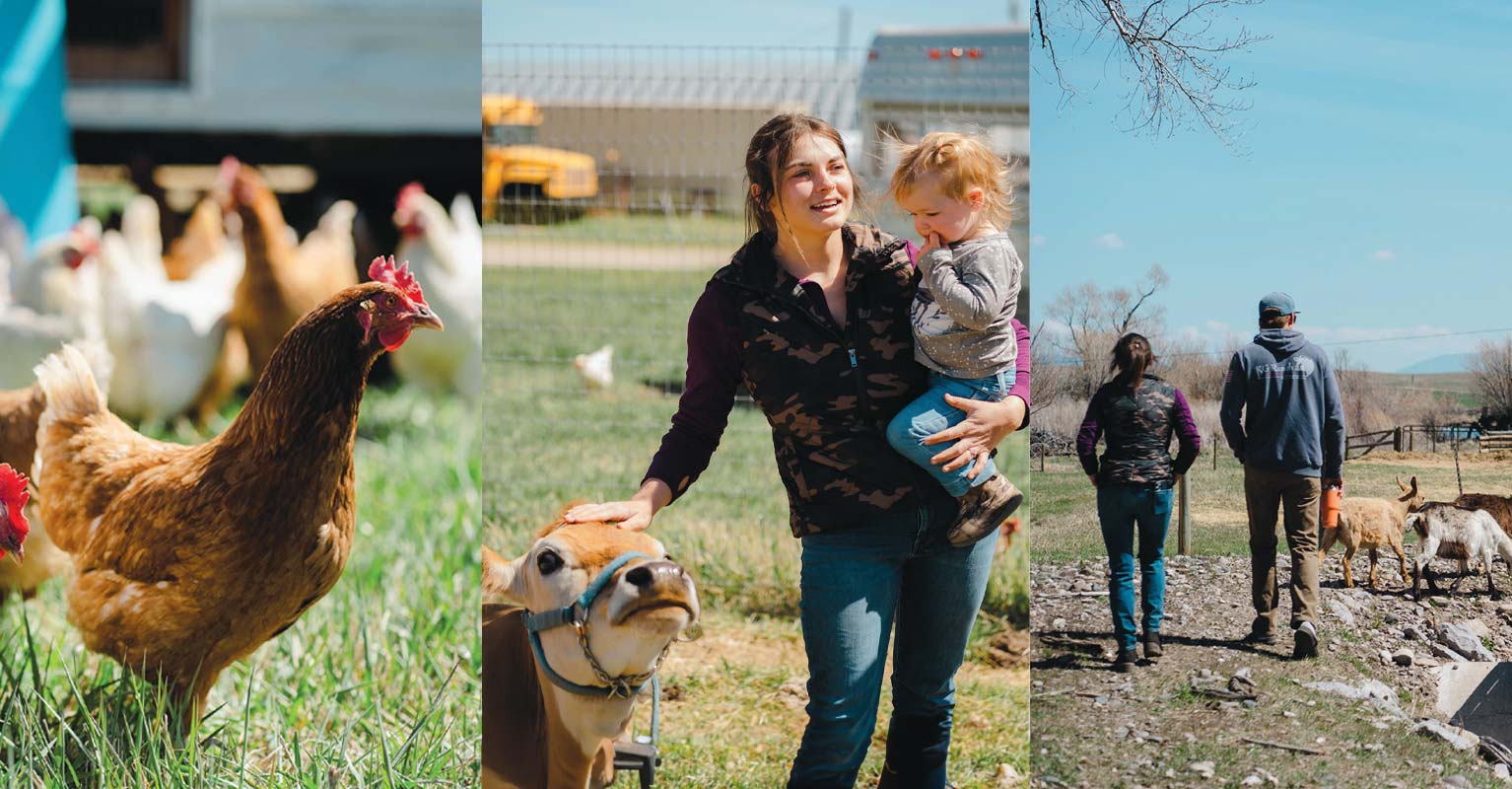The lacy ferns of the mature asparagus crop dance in the warm breeze beneath a summer sunset. It’s a dreamy scene, abuzz with butterflies, bees, and grasshoppers. An Eden, cool and inviting on a hot eve, it feels like the colorful overgrown home of fairies.
This is Covenant Gardens, a small produce operation in the Waterloo area outside of Whitehall, Montana. Covenant is known for delicious purple and green asparagus and garden plants available for purchase at retail stores like Town and Country Foods and Kenyon Noble Hardware. What folks might not know, however, is how intentionally the owners work within the ecosystem to create a farm full of life, and a life full of spirit.
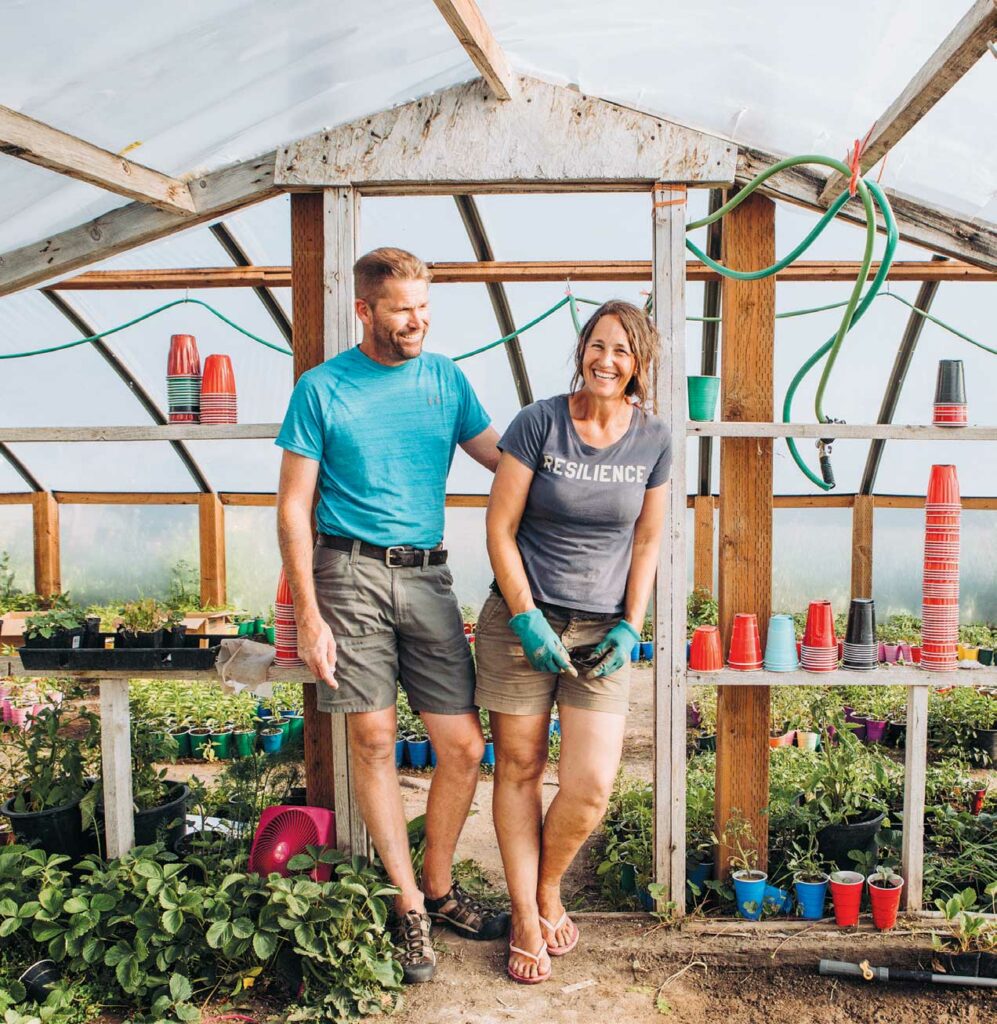
Spirituality is at the root of what Tim and Amy Martin have created at Covenant Gardens. Some may be familiar with the term covenant as an agreement. For the Martins, it’s more than a contract; it’s a promise.
Tim is enmeshed in learning about, teaching, and discussing theology and philosophy. A published author, he feels that “theology is a parallel universe to my farm.” Both conditional and unconditional covenants are reoccurring themes in theology. The difference? Conditional covenants are agreements with terms and conditions that can be broken. Unconditional covenants, however, cannot be broken. They are delivered upon no matter the circumstances, no matter the behavior. This unconditional promise is at the heart of the Martins’ farming practice: The relationship between people and land is inextricably linked.
Humanity has seen the advancement of technology taking our hands out of the soil, the development of chemistry replacing balanced intuitive stewardship, genetic modifications displacing natural propagation, and globalism disconnecting millions from food sources. No matter how separate, destructive, or extractive we become, the reality remains: What we do to the earth, we do to ourselves.
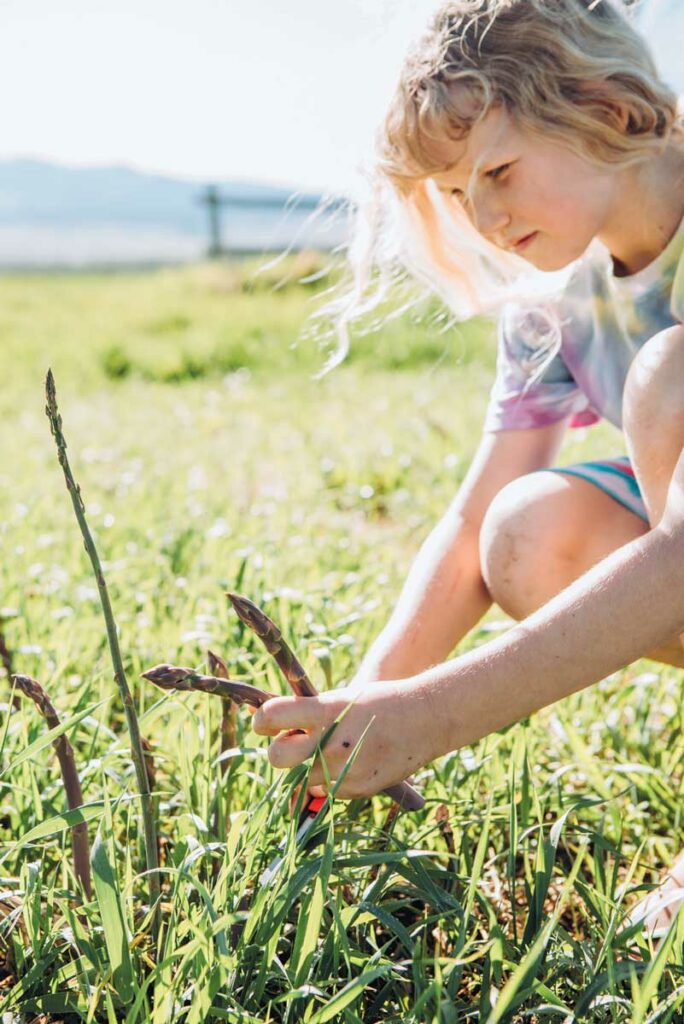
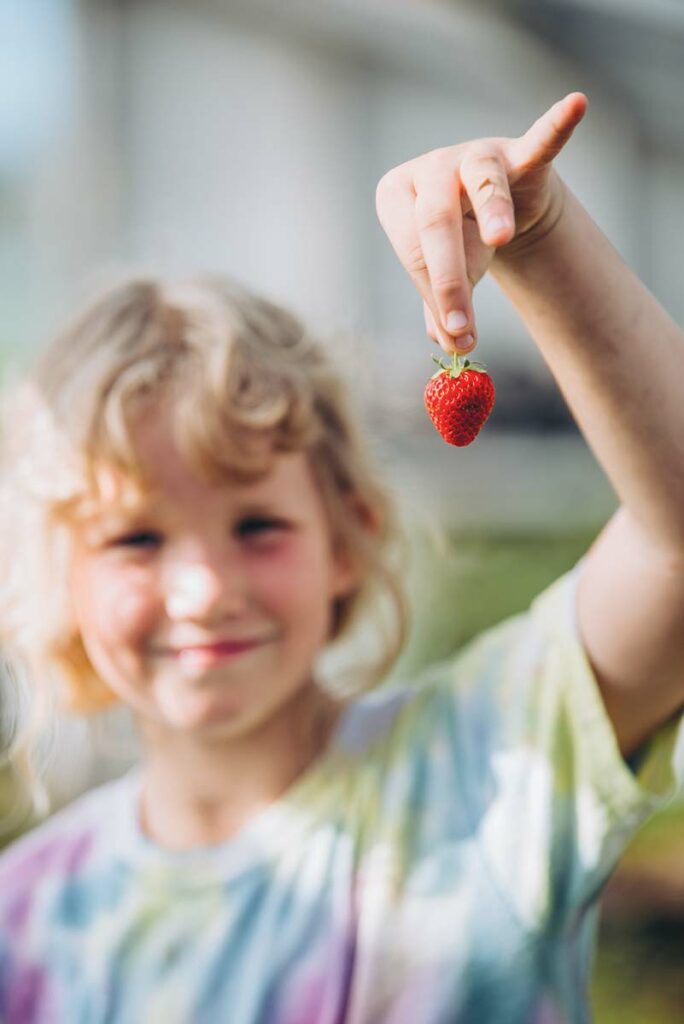
As the Martins demonstrate, when we nurture the land, when we work within and see humanity as a part of the ecosystem, we too are nurtured, restored, and stewarded. Life begets more life, and abundance overflows.
Nestled in the deep and fertile soils of the Tobacco Root Mountains, the Martins and their family of nine children have worked for years to do exactly that. Together with their five children who remain on the farm, they have created a thriving ecosystem and profitable operation with very little inputs and exponential rewards. They grow asparagus, among many other vegetables, practicing regenerative farming techniques.
The principles of regenerative farming are different from other popularized terms in the agricultural industry, such as sustainable or organic farming. While these are all valuable steps toward an improved relationship with the ecosystem, regenerative farming takes things a step further. Instead of simply sustaining the soil’s health, regenerative practices aim to build, grow, and improve it. This includes soil biology, wildlife, pollinators—and, of course, ourselves. Once established, the ripple effect of these efforts expands exponentially through not only agricultural lands but communities as well.
The Martins have always grown produce. Hailing from Colorado and moving to Montana in 1999, they purchased their current farm in 2009. They experimented with various crops, such as strawberries, seed for an heirloom Indian corn, and asparagus. They settled with asparagus because it is perennial, deer resistant, and drought tolerant—all characteristics necessary for growing in a region they want to work with, as opposed to overcome. Taking only a few years to establish the fields, they began planting in 2010 and now have a robust two acres of crop that they continue to supplement with seed.
The secret? Work with nature, not against it, they say. It may sound simple, but the Martins have thoughtfully crafted a method that works with the inherent intelligence of nature. Planting the asparagus in wide rows, they inter-plant over 17 species as cover crops, consisting largely of grasses, legumes, brassicas, and pollinators. These do many things, from aerating, decompacting, and fixing nitrogen in the soil to attracting butterflies, bees, and diverse other insects. The Martins rarely disturb the soil with a plow or till, allowing the microbial life to flourish and maintain moisture.
Every spring, the asparagus comes up in May and after about a month of intense harvesting, the Martins allow the asparagus to mature and fern so as to make way for photosynthesis, which allows the plants to collect energy in the root system for next year’s growth. At that point, the cover crop takes its turn, blossoming into a lush habitat of its own. Mowing once or twice through the summer leaves a dense mulch of green matter that acts as habitat for insects and wildlife, protects the soil from moisture loss, and provides a decomposing fuel for healthy worm and insect populations. In the fall, the Martins allow cattle to graze and naturally fertilize the field, a form of biomimicry of bison and the prairie days of old. Finally, in winter the vegetation becomes shelter and feed for deer before it all begins again in the spring.
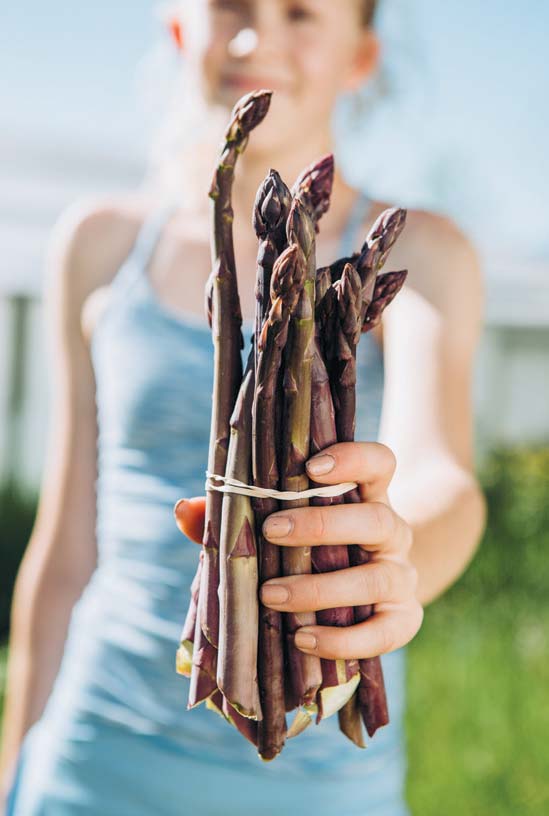
This robust cycle is reflective of the Martins’ spiritual life. The way they live on the farm is an extension of how they live and behave in their community. They see themselves as a part of the ecosystem of humanity, and as such Tim and Amy work to build a life that is regenerative; one that serves, nurtures, and grows those around them. Beginning with food.
The rich soil the Martins nurture in their field is also used in the greenhouse each year for potting soil to grow vegetable starts that are sold to grocery stores throughout the area. This rich soil, full of healthy microbes and organisms, earthworms and nutrients, is potted up, sold, and transplanted all over the region from one garden to the next, essentially inoculating home gardens with radiant biodiversity.
“Health in the garden and health in the culture are related,” Tim says. “You can’t just approach it from one angle because all the different realms are connected and feeding each other. It’s like the old saying, ‘If you want to make a small change, you change how you do what you do, but if you want to make a big change, you change how you see the world.’ Isn’t everything that we prioritize in our culture a result of the way people see the world? The only way you can change the world is to influence a different perspective.”
What if we saw our communities as unified ecosystems? What if we worked not to sustain our communities, but to regenerate them; to build our health, grow our minds, strengthen our spirits, and care and nurture our relationships for the next generation? What if we saw challenges as opportunities to work with each other and create balance, instead of viewing them as obstacles to fight and overcome? The Martins believe the earth will always be a mirror to humanity, and as such, we can never really break our role in the ecosystem. How we care for the soil of our societies will be reflected in how well we live ourselves.


